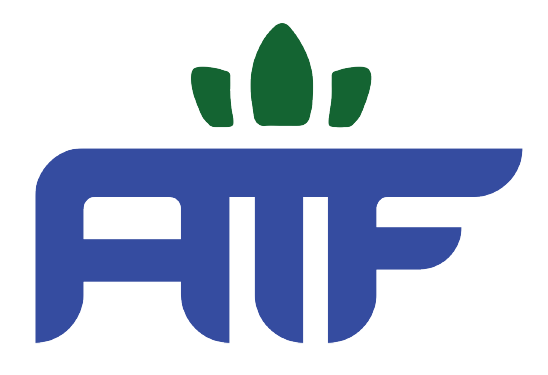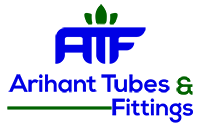Write-offs affect both balance sheet and income statement accounts on your financial statement, so it’s important to be accurate when handling bad debt write-offs. While the direct write-off method is the easiest way to eliminate bad debt, it should be used infrequently and with caution. Beginning bookkeepers in particular will appreciate the ease of the direct write-off method, since it only requires a single journal entry. If an old debt is paid, the journal entry can simply be reversed and the payment posted to the customer’s account. The account had a credit balance of $17,000 before the adjustment.
It violates GAAP
If you’re wondering which method is best for your small business, speak with a professional for insights into your specific situation. In the direct write off method example above, what happens if the client does end up paying later on? Accounts Receivable would be debited, and the Bad Debt Expense account would be reduced. The calculation here is a few more steps but uses the same methodology used in all the other methods.
The Direct Write-Off Method: Should You Use It In Your Business?
Because write-offs frequently occur in a different year than the original transaction, it violates the matching principle; one of 10 GAAP rules. The allowance method is the more generally accepted method due to the direct write-off method’s limitations.
Allowance for Doubtful Accounts is where we store the nameless, faceless uncollectible amount. We know some accounts will go bad, but we do not have a name or face to attach to them. Once an uncollectible account has a name, we can reduce the nameless amount and decrease Accounts Receivable for the specific customer who is not going to pay. What effect does this have on the balances in each account and the net amount of accounts receivable? The balance in Accounts Receivable drops to $9,900 and the balance in Allowance for Doubtful Accounts falls to $400. One method, the direct write-off method, should only be used occasionally, while the allowance method requires you estimate bad debt you expect before it even occurs.
Allowance for Doubtful Accounts is a contra-asset account so that is what we calculated. The adjusted balance in Allowance for Doubtful Accounts should be $31,800. Since the current balance is $17,000, we need to increase the balance to $31,800. The $14,800 is the amount of Bad Debt Expense that must be recorded. The company estimates that 1.5% of credit sales are uncollectible.
Direct write off method GAAP compliance
This is considered an expense because bad debt is a cost of doing business. Part of the cost of allowing customers to borrow money, which is essentially what a customer is doing when the business allows the customer time to pay, is the expense related to uncollectible receivables. The direct write-off method is easy to operate as it only requires that specific debts are written off with a simple journal as and when they are identified. The problem however, is that under generally accepted accounting principles (GAAP), the method is not acceptable as it violates the matching principle. Suppose a business identifies an amount of 200 due from a customer as irrecoverable as the customer is no longer trading. If the amount is not collectible, it needs to be removed from the customers accounts receivable account, and this is achieved with the following direct write-off method journal entry.
Under the direct write off method, when a small business determines an invoice is uncollectible they can debit the Bad Debts Expense account and credit Accounts Receivable immediately. This eliminates the revenue recorded as well as the outstanding balance owed to the business in the books. This journal entry eliminates the $500 balance in accounts receivable while creating an account for bad debt. The balance of the Allowance for Bad Debt account is subtracted from your revenue account to reduce the revenue earned. What happens when a customer doesn’t pay for products or services? The business is left out of pocket with “bad debt” to balance in the books.
At this point, the $500 would be considered uncollectible, so Wayne needs to remove it from his accounts receivable account. If he does not write the bad debt off, it will stay as an open receivable item, artificially inflating his accounts receivable balance. The direct write-off method doesn’t adhere to the expense matching principle—an expense must be bookkeeping toledo recognized during the same period that the revenue is brought in.
For example, a company may recognize $1 million in sales in one period, and then wait three or four months to collect all of the related accounts receivable, before finally charging some bad debts off to expense. This creates a lengthy delay between revenue recognition and the recognition of expenses that are directly related to that revenue. Thus, the profit in the initial month is overstated, while profit is understated in the month when the bad debts are finally charged to expense. The alternative to the direct write off method is to create a provision for bad debts in the same period that you recognize revenue, which is based upon an estimate of what bad debts will be. This approach matches revenues with expenses, so that all aspects of a sale are included within a single reporting period.
Direct write-off method vs. allowance method: What’s the difference?
Using the allowance method can also help you prepare more accurate financial projections for your business. The direct write-off method waits until an amount is determined to be uncollectible before identifying it in the books as bad debt. Reporting revenue and expenses in different periods can make it difficult to pair sales and expenses and assets and net income can be overstated. To keep the business’s books accurate, the direct write-off method debits a bad debt account for the uncollectible amount and credits that same amount to accounts receivable. The direct write-off method is a way for businesses to record bad debt.
- The direct write off method involves charging bad debts to expense only when individual invoices have been identified as uncollectible.
- One issue that immediately crops up when it comes to this method is that of direct write off method GAAP compliance.
- Since the current balance is $17,000, we need to increase the balance to $31,800.
- With the direct write-off method, there is no contra asset account such as Allowance for Doubtful Accounts.
When using this accounting method, a business will wait until a debt is deemed unable to be collected before identifying the transaction in the books as bad debt. The IRS allows bad debts to be written off as a deduction from total taxable income, so it’s important to keep track of these unpaid invoices in one way or another. It’s also important to note that unpaid invoices are categorized as assets, which are debited in accounting. In other words, it can be said that whenever a receivable is considered to be unrecoverable, this method fully allows them to book those receivables as an expense without using an allowance account. It should also be clarified that this method violates the matching principle. As in, Expenses must be reported in the period in which the company has incurred the revenue.
Bad debt refers to any amount owed by a customer that will not be paid. The direct write off method of accounting for bad debts allows businesses to reconcile these amounts in financial statements. Because we identified the wrong account as uncollectible, we would also need to restore the balance in the allowance account. If the customer paid the bill on September 17, we would reverse the entry from April 7 and then record the payment of the receivable. If the customer’s balance is written off as uncollectible, there is nothing to apply the payment against. If the company applies the balance against the customer’s account, the entry would cause a negative balance or an amount due to the customer.
The estimated amount is debited from the Bad Debts Expense and credited to an Allowance for Doubtful Accounts to maintain balance. Chartered accountant Michael Brown is the founder and CEO of Double Entry Bookkeeping. He has worked as an accountant and consultant for more than 25 years and has built financial models for all types of industries. He has been the CFO or controller of both small and medium sized companies and has run small businesses of his own. He has been a manager and an auditor with Deloitte, a big 4 accountancy firm, and holds a degree from Loughborough University. Kristin is a Certified Public Accountant with 15 years of experience working with small business owners in all aspects of business building.
Therefore it is not advised to use the Direct Write-off Method to book for the uncollectible receivables. Instead, the company should look for other methods such as appropriation and allowance for booking bad debts for its receivables. When using the percentage of sales method, we multiply a revenue account by a percentage to calculate the amount that goes on the income statement. We already know this is a bad debt entry because we are asked to record bad debt.
For these reasons, the accounting profession does not allow the direct write-off xero accounting software blog and news method for financial reporting. Instead, the allowance method is to be used for the financial statements. The direct write off method violates GAAP, the generally accepted accounting principles. GAAP says that all recorded revenue costs must be expensed in the same accounting period. This is called the matching principle, according to Accounting Tools.


Recent Comments